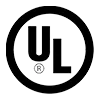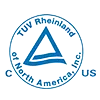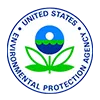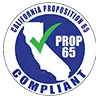This is an essential part of any emergency preparedness plan, and it's especially crucial for those who are serious about long-term survival in the face of unexpected circumstances.
Emergency Water Supplies: A Lifeline in Crisis
Water is a fundamental human need. Each person requires at least one gallon of water per day to maintain hydration and hygiene. In an emergency, this need becomes even more critical. Natural disasters, infrastructure failures, or other crises can disrupt water supplies, making it difficult to access clean, safe drinking water.
One of the most reliable sources of water in an emergency is bottled water. Unopened, commercially bottled water is safe, convenient, and has a long shelf life. However, relying solely on bottled water for your emergency supply can be costly and space-consuming, especially if you're preparing for a large family or a long-term crisis.
That's where water purification methods come into play. If you have access to a natural water source, such as a river, lake, or well, you can use various methods to purify this water and make it safe for drinking.
Purification Methods: Making Water Safe to Drink
Boiling is one of the most effective methods to purify water. It kills most disease-causing microorganisms, including viruses, bacteria, and parasites. To purify water by boiling, you need to bring it to a rolling boil for at least one minute. If you're at an altitude above 6,500 feet, you should boil the water for three minutes. After boiling, let the water cool naturally and store it in clean, sanitized containers with covers.
Another method to purify water is disinfection using household bleach. This method is useful if boiling is not possible. To disinfect water, you need to add unscented household chlorine bleach to the water. The amount of bleach you need to add depends on its concentration and the amount of water you're disinfecting. After adding bleach, stir the water well and let it stand for at least 30 minutes. The water should have a slight chlorine odor. If it doesn't, repeat the dosage and let it stand for another 15 minutes.
It's important to note that while boiling and disinfection can kill most microorganisms, they will not remove other contaminants such as heavy metals, salts, and most chemicals. If you suspect that your water source is contaminated with these substances, it's best to use a different source of water.
Storing Your Emergency Water Supply
Once you have your purified water, you need to store it properly to ensure it remains safe to drink. Store your water in clean, food-grade water storage containers. You should avoid using containers that were previously used to hold liquid or solid toxic chemicals, such as bleach or pesticides.
Label each container as "drinking water" and include the storage date. Store the containers in a cool, dark place away from direct sunlight and toxic substances. If you're filling the containers with water from your home supply, replace the water every six months to ensure its safety.
In conclusion, having an emergency water supply and knowing how to purify and store water are crucial parts of any emergency preparedness plan. By taking these steps, you can ensure that you and your family have access to safe, clean drinking water in any situation.
Stay tuned for our next blog post, where we'll delve into the world of emergency food supplies and how to choose and store food that can sustain you and your family in a crisis.
Remember, preparedness is not about fear, it's about empowerment. Being prepared means being equipped with the knowledge and supplies to handle an emergency with confidence. So, stay safe, stay prepared, and stay tuned!














